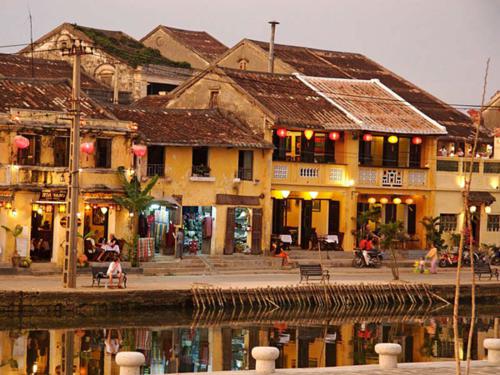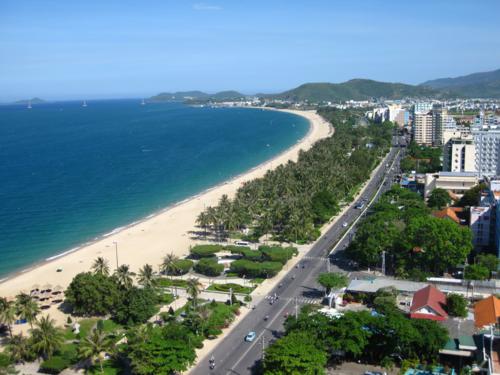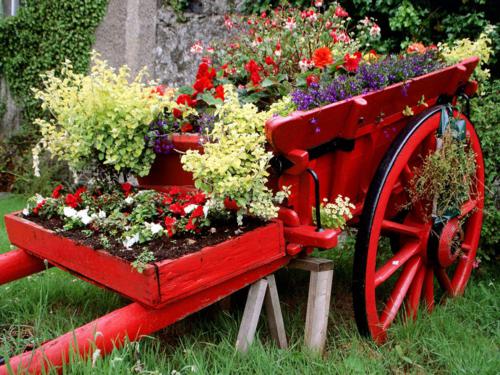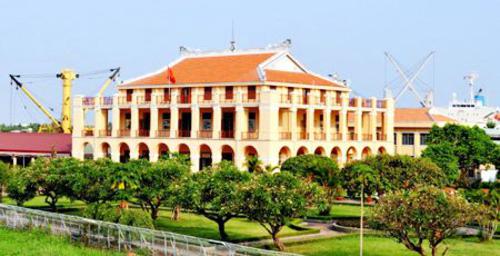Mention the name Vietnam, and most people assume you mean the war, thirty seven years since the end of the war, it is a country at peace, with spectacular geography, a vibrant culture, and genuinely friendly people. it is in reality a country filled with captivating natural beauty and tranquil village life. Its highlands and rainforest regions, far from being devastated, continue to yield new species and team with exotic wildlife. Its islands and beaches are among the finest in all of Southeast Asia, and its cuisine is very possibly the most delicious you will ever find.
Here some places you should visit when traveling in Vietnam:

Vietnam’s small and pleasant capital lies at the heart of the northern Red River Delta, and is a city of lakes, leafy boulevards and open parks with a French colonial feel. Hanoi was founded in 1010, and became the centre of government for the Indochina Union under French rule in 1888. In 1954 it became the official capital of independent Vietnam. Today ancient crumbling buildings dating from the 11th century lie scattered among grand French colonial residences, while shrines and monuments to Vietnam’s first president, Ho Chi Minh, sit in the shadow of modern high-rise buildings. The streets of the Old Quarter preserve age-old customs, where trade takes one back half a century, and temples, pagodas and monuments reflect the historic character of Vietnam. Hanoi is fast becoming one of the most enticing and interesting cities in Asia. As a cultural centre there are traditional water puppet shows, and music and dance performances. It is also a good base for excursions to the beautiful Ha Long Bay, or into the Hoang Lien Mountains inhabited by several hill tribes. See The Pagodas and Temples in Ha Noi.

In the Gulf of Tonkin, includes some 1,600 islands and islets, forming a spectacular seascape of limestone pillars. Because of their precipitous nature, most of the islands are uninhabited and unaffected by a human presence. The site’s outstanding scenic beauty is complemented by its great biological interest. This densely concentrated zone of stone islands, world famous for its spectacular scenery of grottoes and caves, forms the central zone of Halong Bay, which has been named a UNESCO World Heritage Site.
Sapa

This is a small market town that has been a gathering spot for many local hill tribes for nearly 200 years. H’mong and Dao people, among others, still come here to conduct trade, socialize. It is a picturesque village near the Chinese border in north-east Vietnam. Sapa is one of the most enchanting of the Vietnam popular destinations. It is situated among the greenery of the high Tonkinese Alps. A visit here lets you enjoy the beauty of a village built during the French colonial days. The village was built to avoid the summers in Hanoi. The village has a serene beauty. It is a land of complete peace and delight. The village can provide a fulfilling experience even with limited amenities. Sapa is one of those rare places in Vietnam which have the ability to provide a glimpse of the tribal life as it existed a couple of centuries ago.

Hoi An was designated a UNESCO World Heritage Site in 1999, and a visit to this old-world gem is a sure cultural highlight of any tour in Vietnam. The quaint riverside town of Hoi An was an important port town and one of the major trading centres in South East Asia during the 16th and 17th centuries. The cultural influences of the Japanese and Chinese merchants are still evident today in the town’s architecture, with the famous Japanese Covered Bridge and the distinctly Chinese atmosphere of the Old Quarter part of its unique character. Lining the narrow streets are two storey Chinese shops with charming wooden facades and tiled roofs, merchants’ homes, Assembly Halls and temples that preserve its ancient character. On the 15th day of every lunar month the ancient character of this sleepy town takes on fairytale propotions as porches, streets and windows are lit by the glow of colored lanterns, a practice reminiscent of the old days and aimed at retaining the ancient spirit of the past. See The information of Hoi An Cultural – Tourism festival 2013.

Hue is the former modern capital of Vietnam. It is well known for its monuments and architecture. The city is located in central Vietnam on the banks of the Perfume River, just a few miles west of the South China Sea. Hue originally rose to prominence as the capital of the Nguyen family, a feudal dynasty which dominated much of (then) southern Vietnam from the 17th to the 19th century. In 1802, Emperor Gia Long succeeded in establishing his control over the whole of Vietnam, thereby making Hue the national capital. It retained this status until 1945, when last Emperor Bao Dai abdicated. Hue’s most outstanding attractions are the royal citadel, an imperial city and the emperor’s tombs. Hues complex of monuments is listed among the UNESCO’s World Heritage Sites.

Nha Trang is a coastal city and capital of Vietnam’s Khanh Hoa province, 1 hour by flight from both Danang and Saigon City. This city is well known for its pristine beaches and excellent scuba diving, it is fast becoming a destination for international tourists. Large numbers of backpackers on the South-east Asia circuit head there for sun and salt water. But locals have been on to it for years. Flanked by almost 10km of prime beach and warm water year round, it’s not surprising people love going there. Its average temperature is 26ºC and it has Vietnam’s lowest level of humidity.

The Highlands around Dalat is where we specialize and base our activities. Dalat is a quiet town in the south central highlands of Vietnam, about 300 kilometers from Ho Chi Minh City, and is set in a landscape dotted with lakes and blanketed with pine forested hills and jungle covered valleys. It was first established as a hill station by the French, and many of the fabulous villas they built are still here. The cool climate, clean air and escape from the heat and congestion of Saigon provide the perfect setting for the adventure sports we love to do. At an altitude of between 1,500 and 2,000 meters the cool, hilly terrain is fantastic for mountain biking, trekking, canyoning, kayaking, rappelling and rock climbing.
Phan Thiet (Mui Ne)

Located in Phan Thiet, Binh Thuan province, has long been considered the “Hawaii” of Vietnam. It boasts shady roads under coconut trees, a beautiful beach and cliffs battered by the waves of the sea. The typical scenery of Mui Ne lies in the moving lines of golden sand caused by the wind and when they are seen from afar they look like moving waves. The scenery looks more fascinating at dawn, when young Cham girls in green dresses go to work. Mui Ne is an ideal place for rest and relaxation. Away from the beach, the key attraction of Mui Ne are its sand dunes, of which there are three sets which can easily be visited from Mui Ne. Best visited in the late afternoon when the light is sublime, you can also catch the sunset from above Mui Ne village which, with its bevy of fishing boats, is particularly scenic.

Once romantically referred to by the French as the Pearl of the Orient, Ho Chi Minh City is still called Saigon by almost everyone who lives there. It is a modern city by Asian standards and has only been under firm Vietnamese control for a little more than 200 years. The city’s character remains essentially French with wide boulevards, colonial villas, and a lively café society but also resolutely Asian. It has more of a cosmopolitan feel than Hanoi, although much of the old French colonial city is vanishing beneath the rapidly rising skyline and the sheer weight of recent history. Combined with this vivacious street life, the city’s French influences have bred a charm all their own. But it is the people even more than the city that you will remember most.
The Mekong Delta is the southern rice bowl of Vietnam. The Mekong River, one of the famous river of the world, is known to the Vietnamese as Song Cuu Long (River of the Nine Dragons). The Mekong originates high in the Tibetan plateau, flowing through China, between Myanmar (Burma) and Laos, along the Lao-Thai border and through Cambodia and Vietnam. The Mekong splits into two main branches in Phnom penh, the lower river cross Chau Doc, Long Xuyen and Can Tho and flows to the sea, the upper river splits into several branches at Vinh Long and empties into the sea at six points. Half of the delta region is fully covered with rice fields. The region is dotted with small villages and towns and several large centres like Can Tho, My Tho, Rach Gia, Chau Doc and Ca Mau. There are many Khmer temples and relics dating from previous centuries. This is an area of endless paddy fields and mangrove swamps, small villages and communities and, along the coast, deserted beaches. Special features include Vinh Long with the most charming hotel in the Mekong Delta, Chau Doc and the temple hill, Ha Tien with the best beach in Vietnam and Soc Trang and Tra Vinh with their Khmer temples.
Source: Vietnamluxurytravel
